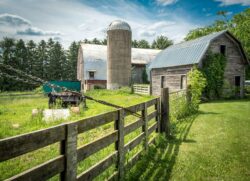Dimension 2EW Herbicide is a widely used product for controlling a variety of weeds, including crabgrass, in turfgrass.
Its active ingredient, Dithiopyr, functions as a pre-emergent and early post-emergent herbicide, targeting weed seedlings’ root development without harming established grasses.
For homeowners and turf managers who cultivate Kentucky Bluegrass, understanding whether Dimension 2EW will adversely affect their lawns is crucial.
Will Dimension 2EW Damage Kentucky Bluegrass?
Dimension 2EW is formulated to be safe on Kentucky Bluegrass when applied according to the label instructions.
It is designed to control weeds by inhibiting their root growth while being gentle on established turfgrass, including Kentucky Bluegrass, which is known for its desirable qualities such as resilience, dense growth, and vibrant color.
Understanding Dimension 2EW’s Impact on Kentucky Bluegrass
- Selective Weed Control: Dimension 2EW selectively targets weed seedlings, making it an effective solution for maintaining the aesthetic and health of Kentucky Bluegrass lawns without causing damage.
- Application Guidelines: The herbicide’s efficacy and safety depend on following specific application guidelines, including the correct dosage and timing relative to the lawn’s growth cycle and the targeted weeds’ germination period.
- Soil Activation: For Dimension 2EW to be effective, it requires activation by at least 0.5 inches of rainfall or irrigation. This helps the herbicide penetrate the soil where it can prevent weed seed germination.
Best Practices for Using Dimension 2EW in Kentucky Bluegrass Lawns
- Timing of Application: Apply Dimension 2EW in early spring before weed seeds germinate or in fall for control of winter annuals. For Kentucky Bluegrass, ensuring the lawn is well-established before application is key to avoiding any potential stress or damage.
- Overseeding Considerations: If planning to overseed a Kentucky Bluegrass lawn, it’s important to note that Dimension 2EW can inhibit the germination of new grass seeds. Waiting for the appropriate interval after application before overseeding is crucial for successful lawn establishment.
- Rate and Frequency: Adhering to the recommended application rate (not exceeding 6 pints per acre per year) and frequency is essential to prevent overapplication, which could potentially stress or harm the turfgrass.
FAQs on Dimension 2EW and Kentucky Bluegrass
How does Dimension 2EW compare to other pre-emergent herbicides for Kentucky Bluegrass? Dimension 2EW is favored for its dual action as both a pre-emergent and early post-emergent herbicide, offering broader control of weeds compared to some other pre-emergents that only prevent weed germination.
Can Dimension 2EW be used in mixed grass lawns? Yes, Dimension 2EW is safe for use in lawns with a mix of grass types, including Kentucky Bluegrass, Tall Fescue, and Perennial Ryegrass, among others.
However, it’s not recommended for certain types of fine fescue due to sensitivity.
What are the environmental considerations when using Dimension 2EW? As with any herbicide, using Dimension 2EW responsibly involves considering its impact on the environment.
It’s important to apply it in calm weather conditions to avoid drift, follow label instructions for safe handling and disposal, and consider the timing of application to protect beneficial insects and aquatic life.
In Summary
Dimension 2EW Herbicide offers an effective solution for controlling weeds in Kentucky Bluegrass lawns without causing harm when used as directed.
Its selective action against weeds, combined with proper lawn care practices, supports the growth and health of Kentucky Bluegrass.
By adhering to application guidelines and considering the lawn’s overall condition and needs, homeowners and turf managers can use Dimension 2EW to maintain vibrant, weed-free lawns.
Sources
- Lawn Dork: Provides an overview of Dimension 2EW, including its use and safety on various turf types. Dimension 2EW on Lawn Dork
- Solutions Stores: Discusses Dimension Herbicide and its application rates and safety for different grass types. Dimension Herbicide – Solutions Stores
- DoMyOwn: Offers a Q&A section where users can learn about Dimension 2EW’s effects on different grasses and its application. Dimension 2EW Herbicide Q&A – DoMyOwn



